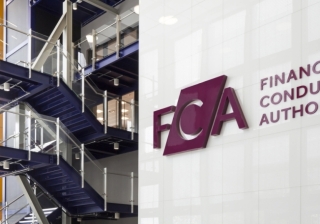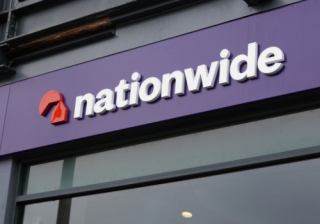The future for buy-to-let mortgage lending
Steve Cox, chief commercial officer at Fleet Mortgages, looks at how the buy-to-let market has responded to rising rates in 2023 and what's to come in terms of product innovation.

"The wider issue may be in terms of the ability, and appetite, to add to portfolios with these higher rates, and specifically the affordability challenge that will need to be met going forward."
As we pass the half-way mark of the year, it’s possible to split the first six months into two distinct three-month periods quite different from each other.
January to March was fairly benign, and it looked like we were in for a 2023 which would continue to see rates coming down, and a greater degree of stability and certainty delivered. Well, as we know, that quickly went out of the window in Q2.
Our recent quarterly Rental Barometer Index contains a raft of stats which show a quite different April to June period – one buffeted by inflation impacting on rates (both Base and swaps), resulting in a difficult environment for advisers and their buy-to-let clients, particularly those needing to refinance during those months.
At the same time, we know that the PRS is attempting to cope with a drop in supply – although perhaps a little has come back to the sector in recent weeks – and a large number of tenants seeking a lower number of properties than anyone would like.
That has resulted in rents going up and yield staying strong. Seemingly good news for landlords but offset, as mentioned, by a significant increase in mortgage costs.
Looking at our latest quarterly statistics, ongoing rental yield strength is visible right across all the regions in which Fleet lends, with – for the second consecutive quarter running – every single one in England and Wales registering an annual increase.
That, as you might have gathered, is unusual over the past three years we have been producing the Rental Barometer, where certain regions, particularly in the South were unlikely to have seen a significant shift in rental yields upwards.
However, what is also noticeable now is rental yield in Greater London being up 1% on the same quarter last year, and for the first time ever, this means it is not ‘bottom of the table’ when it comes to yield.
Of course, you have to remember that the average rental amount per month is the highest of all regions in London, up at £2,111; indeed that is over £600 more pcm than the next on the list, the South West at an average of £1,449.
Yet, for those landlords in Greater London who have spent the last few years accepting lower rental yields – no doubt in return for anticipated greater increases in capital value – this does seem like a small shift away from the recent norm, and will be welcome for those who still want good rental yields as well as access to higher valued properties.
Talking of which, it is fairly obvious that rental yield has increased due to a number of factors – of course, lower supply of property for the PRS, strong ongoing tenant demand, but also the fact house prices have been easing over the last year or so.
For those landlords who haven’t needed to refinance – onto what would undoubtedly be higher rates – over that timeframe, and are perhaps benefiting from the lower interest rate environment we had pre-‘Mini Budget’, and will do for some time, their rental yield should have improved, as I suspect rents have been pushed up.
The wider issue may be in terms of the ability, and appetite, to add to portfolios with these higher rates, and specifically the affordability challenge that will need to be met going forward.
However, while our own percentage of purchase business did drop slightly – from 37% in the first quarter of the year to 32% in Q2 – this still does show that landlords, where appropriate, remain acquisitive. Indeed, the average number of investment properties owned by our landlord customer base increased from 11 to 12 quarter-on-quarter showing we continue to have a predominantly portfolio-based borrower demographic.
That said, the majority of business was refinancing, and as you might expect with a higher interest rate environment, the average five-year fixed rate Fleet offered in quarter two increased to 6.09% from 5.35%, although this was still lower than the average five-year fix across the sector which was 6.31%.
Again, as you might have anticipated, average rental cover at origination dipped from 181% to 167%, while the average loan size dropped from £197k to £174k, both indicative of how higher rates impact on ICR and in terms of the loans borrowers are able to achieve with higher rates.
It is perhaps not surprising that we continue to see a greater number of lower rate/higher fee products within the buy-to-let space, and even with swap rates easing lately, and there being the potential to see this transfer into product pricing, I suspect we will continue to see lenders look at those products which allow borrowers to meet affordability and secure the loans they need. In other words, more lower rate/higher fee products are likely to be on their way.
In terms of how this might feed into the second half of the year, my inclination is to think we’ll see further easing on rates, and potentially a little more supply coming into the PRS which should hopefully give tenants a little more choice. If prices begin to stabilise – which isn’t unlikely – we may see the higher rental yields achievable start to tail off slightly.
However, this could hopefully be offset by lower mortgage costs coming through. Some are already calling the top of the rate market – and certainly swaps have come down in recent days – but if the last six months has taught us anything it’s to be prepared for anything. Whether an adviser, a landlord borrower, or indeed a buy-to-let lender.
Breaking news
Direct to your inbox:
More
stories
you'll love:
This week's biggest stories:
This week's biggest stories:
FCA
Firms required to report complaints involving vulnerable customers under simplified FCA rules

Santander
Santander joins mortgage price war with new rates from 3.51%

FCA
FCA sets out timeline for mortgage rule changes

Nationwide
FCA fines Nationwide £44m for inadequate financial crime controls

Inflation
Bank of England set to cut rates as inflation falls to eight-month low

FCA
FCA announces new measures to support growth of mutuals sector
